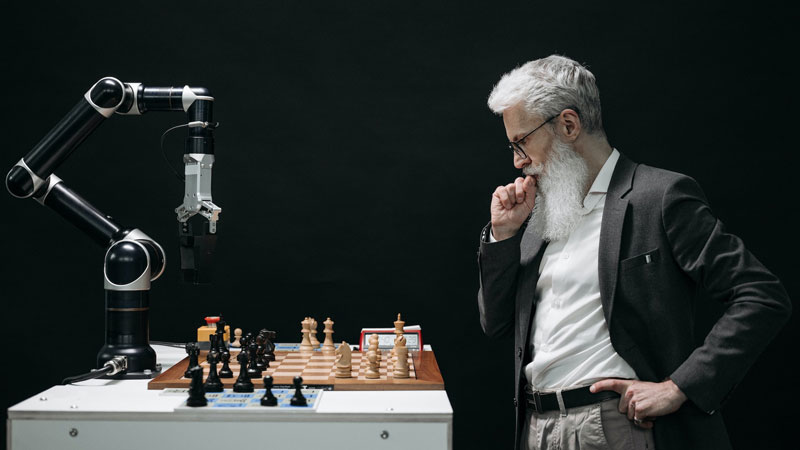In the era of rapid technological advancements, Human AI collaboration has emerged as a game-changing paradigm. The synergy between human intelligence and artificial intelligence has unlocked new frontiers and revolutionized industries across the globe. This article explores the transformative power of Human AI collaboration and how it is reshaping possibilities in various domains.
Understanding Human AI Collaboration
Human AI collaboration refers to the seamless integration of human expertise and AI technologies to enhance problem-solving, decision-making, and innovation processes. Rather than viewing AI as a replacement for humans, this approach recognizes the unique strengths of both parties and leverages them for mutual benefit. By combining human intuition, creativity, and contextual understanding with AI’s computational power, data analysis, and automation capabilities, groundbreaking solutions are being created.
Collaboration Reshaping Opportunity
Human and AI interaction can take various forms, depending on the context and application. Here are some common collaboration examples that reshape opportunities.
Transforming Industries
Healthcare: AI algorithms can analyze vast amounts of medical data and identify patterns that humans might miss. Doctors can leverage AI insights to make more accurate diagnoses and develop personalized treatment plans. In surgical procedures, AI-powered robotic systems can assist surgeons, improving precision and reducing risks.
Manufacturing: AI-enabled automation and robotics are transforming manufacturing processes. Humans collaborate with AI systems to streamline production lines, optimize supply chain management, and improve quality control. AI algorithms can monitor equipment performance, detect anomalies, and predict maintenance requirements, enabling proactive maintenance and minimizing downtime.
Finance: Human AI collaboration is reshaping the financial industry by enhancing decision-making processes. AI-powered algorithms can analyze market trends, predict risks, and identify investment opportunities. Financial advisors leverage these insights to provide clients with personalized investment strategies, while AI chatbots assist customers in managing their finances.
Education: AI-powered educational tools are revolutionizing the learning experience. Adaptive learning platforms can analyze student performance data to provide personalized recommendations and interventions. AI chatbots act as virtual tutors, answering student queries and providing real-time assistance. Human teachers can leverage these tools to deliver more tailored and effective education.
Unleashing Innovation and Creativity
Human AI collaboration is unlocking new dimensions of innovation and creativity. AI algorithms can augment human creativity by generating ideas, providing inspiration, and assisting in the design process. By automating repetitive tasks, AI frees up human resources to focus on higher-order thinking, problem-solving, and strategy development.
Ethical Considerations
While the benefits of Human AI collaboration are profound, it is crucial to address ethical considerations. Transparency, accountability, and fairness must be maintained throughout the collaboration process. Safeguards should be in place to prevent biases in AI algorithms and ensure that the technology respects privacy, data protection, and human rights.
The Future of Human-AI Collaboration
As AI technologies continue to advance, Collaboration will play an increasingly vital role in shaping the future. The partnership between humans and AI will lead to innovative breakthroughs in fields such as healthcare, transportation, energy, and beyond. By leveraging the strengths of both parties, we can unlock possibilities that were once unimaginable.
Conclusion
Human AI collaboration is not about humans versus machines but rather harnessing the unique capabilities of both to redefine possibilities. From healthcare to finance, manufacturing to education, this collaborative approach is revolutionizing industries and transforming the way we work and live. By embracing this partnership, we can unlock new frontiers, unleash innovation, and shape a brighter future for all.
